In Scribes’ Descent, you might have noticed this line on page one: “Orbital rings crisscrossed the sky.” And that’s all you really hear about these objects until chapter 10, where you still don’t get much detail:
“A mag train shuttled Mallory and Leah to the Wilnat habitat in under five hours. The hab sat atop the Mitrian orbital ring over Virsai’s southwest coast, making it a good starting point for the contest. Because it was only two hundred kilometers up and mounted to the stationary frame of the ring, the gravity drop was hardly noticeable. No need for spin gravity like the habs up at geosynchronous altitude.”
I wanted to explain how all that infrastructure works, but the chapter was already long. Nor did I want to bog down the story with a dreaded “info dump”. But for those of you who want the explanation, now you’ll have it! Here’s what the ring looks like, more or less:
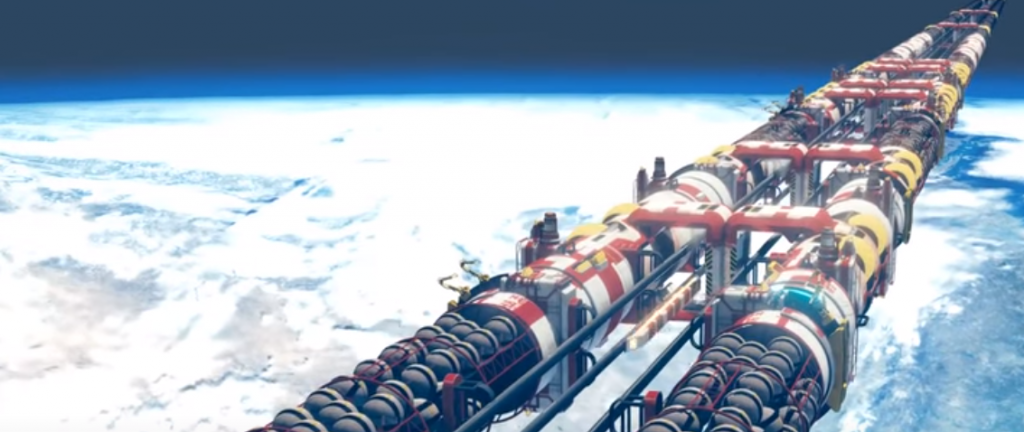
Most of my ideas for this structure came from Youtuber Isaac Arthur, and one of his videos in particular. The screenshot above came from that video. It’s 30 minutes long, but well worth a watch. Here’s my quick version:
- Orbital rings can get people and payloads into space cheaper and safer than shooting them up in chemical rockets.
- An object in a stable orbit around a celestial body must revolve fast enough to remain in orbit at that distance. For low earth orbit, satellites must move 8 kilometers per second. At geosynchronous orbit, which is much farther from earth, satellites need only move 3 kilometers per second.
- Objects in orbit beside me will seem stationary to my eye because we’re moving at the same speed. If I place two platforms beside each other in the same orbit, I can walk across a bridge between them (except in orbit that walk would be more like a float.)
- This bridge can extend around the entire planet. That’s basically what an orbital ring is. Think of a donut-shaped satellite. Scrumptious.
- Make this ring out of metal and stick magnets all along it. Or run electrical current through it to magnetize it.
- Clamp magnetic hoops around the main ring, which magnetically levitate in place.
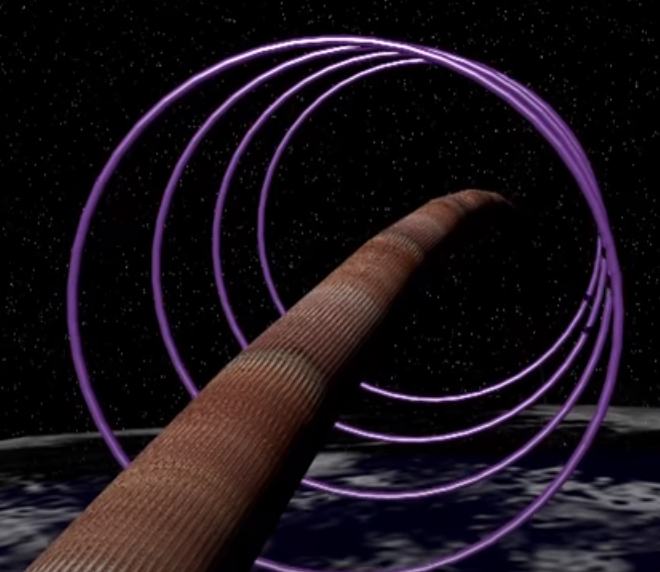
- Build platforms to connect these hoops. Notice that the hoops and platforms are not orbiting the earth. Instead, they hang in the air. They remain stationary relative to the earth, just like skyscrapers. But the main ring inside them is in orbit and spins relative to the earth. While standing on a hoop, if I reach out and tap the inner ring, I might lose a finger.
- Perched on this platform, gravity is only slightly reduced. Mallory and Leah aren’t floating around in the Wilnat Habitat. That’s because they’re not in orbit (the frame is stationary relative to the planet) and the ring isn’t far enough from the planet’s surface for gravity to have reduced much. Why? Sir Isaac Newton has a tidy formula for this:
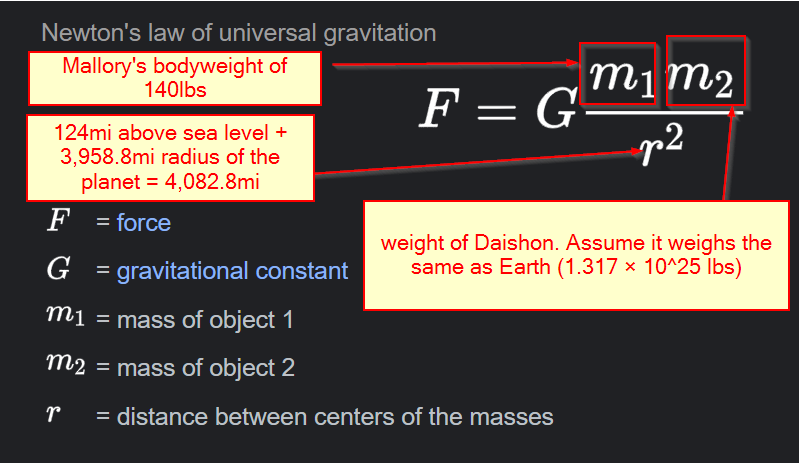
- I just told the world Mallory’s bodyweight. She would not be pleased with me. Good thing she’s in a different universe 🙂
- Plug the numbers into an online calculator:

- Assume Daishon’s mass and radius match the Earth’s. Now the Earth’s radius is 3,958.8 miles, and when calculating gravity between two bodies we must measure from the center of both–from the center of Daishon to the center of Mallory. At 124 miles up, Mallory would weigh 132lbs. That’s only an 8lb loss. I lost 20lbs in the past 3 months and I don’t feel weightless 🙂
- Now we have a spinning ring inside a stationary donut suspended around a planet. But how do we get things up there? We simply drop steel or graphene cables down to the planet. Mount elevators to those cables with electric motors that can hoist them up. Power the motors with solar panels mounted on the ring. And up in space, without the atmosphere to attenuate solar radiation, these panels will absorb much more power than they would on land.
- At scale, we can run entire trains up these cables and around the ring. In chapter 10, Mallory and Leah ride just such a train.
- We can even put buildings on the ring. Mallory and Leah compete in the Virsai Spy contest from inside one of these, which is called an orbital habitat, though the building itself is not really in orbit.
And that’s it! Though nothing about such a structure violates the laws of physics, the amount of materials needed and the effort required to put it in orbit would be, well, astronomical. But it is possible. With these in place, we could easily launch spacecraft into deep space without rockets. (there is no air resistance above the atmosphere, so we can get up to escape velocity quite easily) We could also put up as many of these rings as we want, and they need not span the equator:
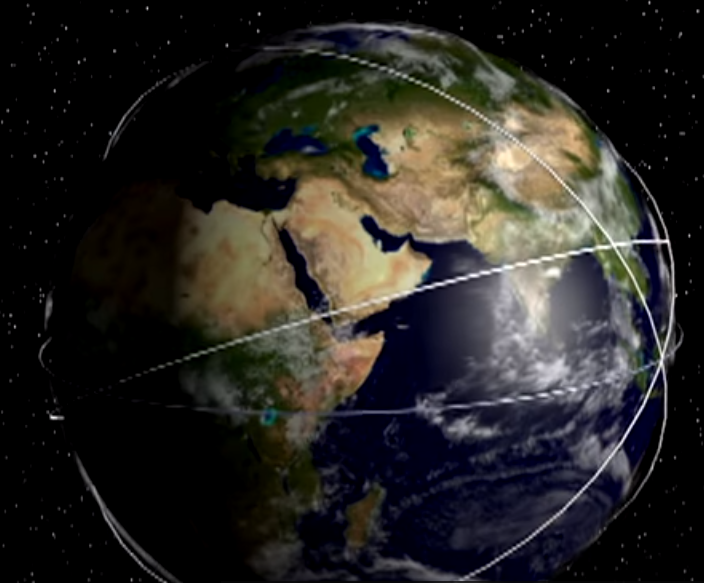
Daishon has two rings that cross each other in an X pattern, and the engineering conglomerates plan to build more as soon as they can afford them. They expect millions more evacuees from Imna, after all.
Since my previous post on map creation, I’ve handpainted an artsy version of Daishon:
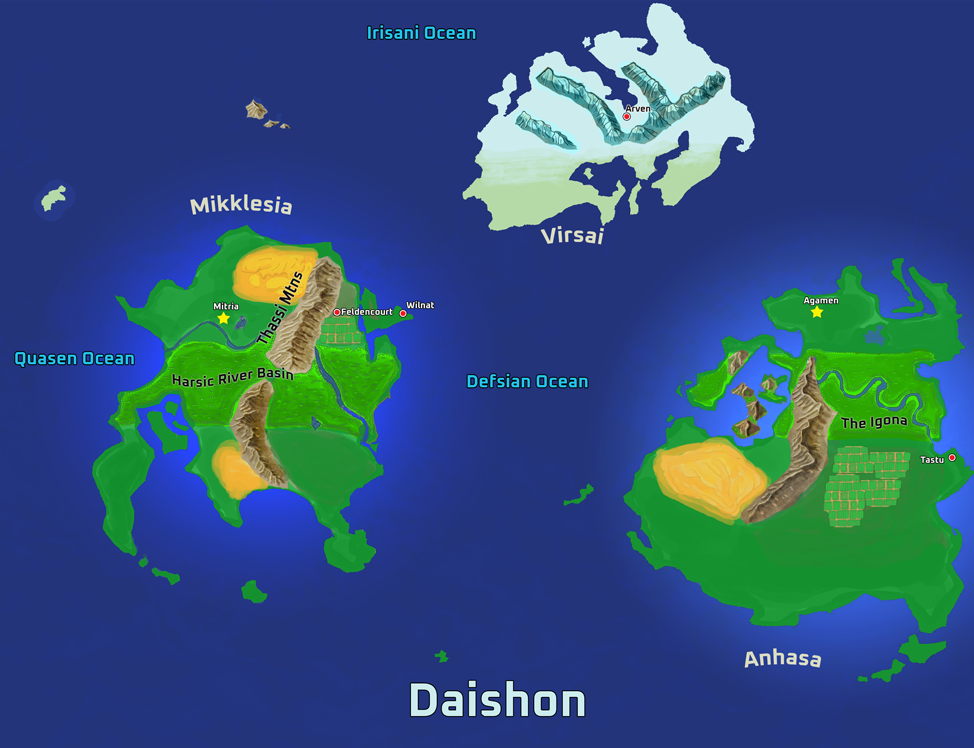
Writing update: Draft 1 of The Sewer Lord is complete! I prepare for a May or June book launch of Scribes’ Descent with the pent-up energy of every toddler I’ve ever met. More to come…
See you next month!
Dylan

I must admit, those space and astrophysics things go far beyond my understanding, but I know you will tame your story.
Hi, Lucinda. Yeah, I had to withhold all these technical details from the novel to avoid bogging down the story. But these designs and principles undergird what you do see in the book 🙂